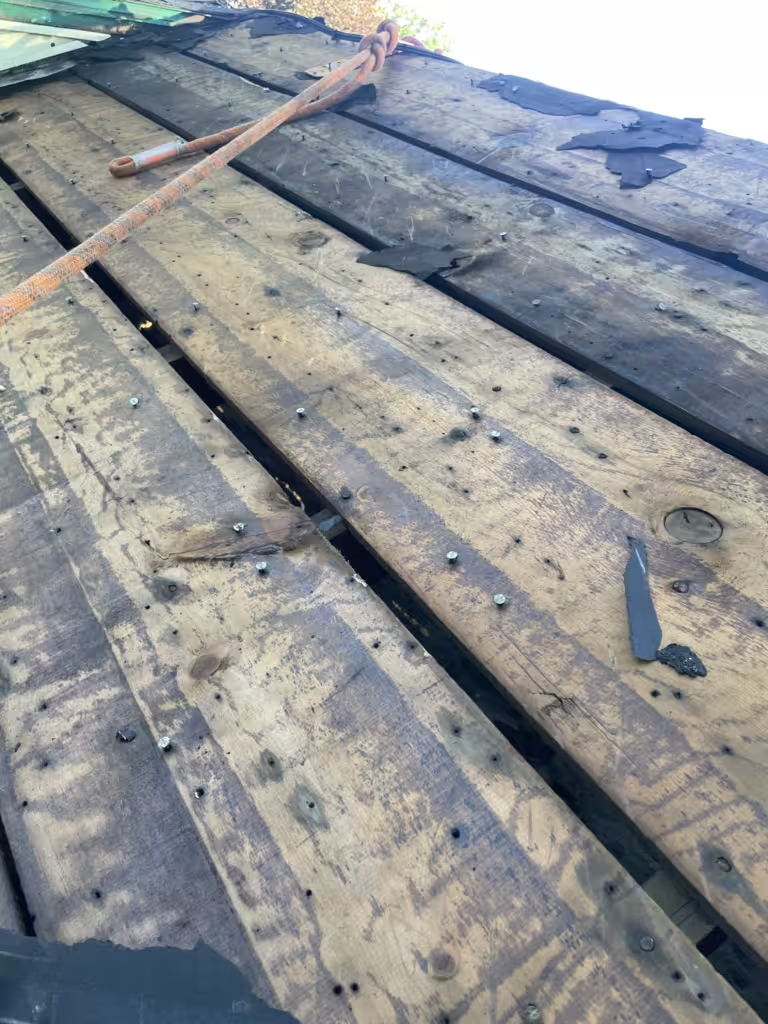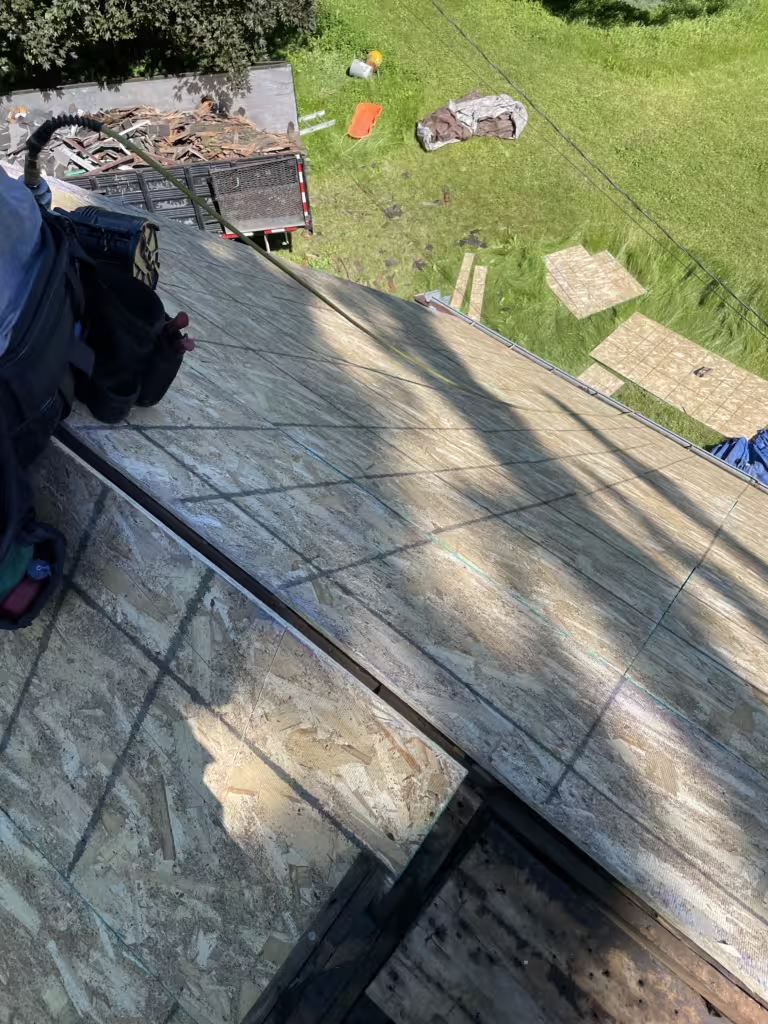A Comprehensive Guide to Redecking a Roof
Redecking a roof, is an essential part of maintaining the structural integrity and longevity of a home. Whether you’re dealing with an aging roof, damage from a storm, or just looking to upgrade, understanding the process and benefits of re-decking can save you time, money, and future headaches. This blog will delve into what re-decking a roof entails, the signs that it might be necessary, and the steps involved in the process.
What Does Redecking a Roof Mean?
Redecking a roof involves removing the old roofing materials down to the decking and replacing or repairing the decking as needed. The decking, often made of plywood or oriented strand board (OSB), acts as the foundation for the roof’s outer layers (such as shingles or tiles). Over time, decking can become compromised due to moisture, rot, or other damage, necessitating its replacement to ensure the roof remains sturdy and secure.
Roof Decking (or roof sheathing) is the wooden boards that make up the framing of your roof. These boards are what your shingles and other roofing components are installed on. There are 2 types of wood roof decking: plank decking and sheet decking.


Plank Decking:
Plank decking was the main type of decking used before the invention of plywood. This type of decking is made up of elongated and rectangular wooden boards that come in 2 different sizes, 1×6 or 1×8. While it’s not as commonly used, you’ll still find this kind of decking used on roofs today.
Sheet Decking:
Sheet decking (or sheathing) is exactly what it sounds like, flat sheets of wood. There are 2 types of sheet decking: plywood and OSB. OSB (oriented strand board) is the most common type of decking used on roofs today.
5 Signs you need to redeck your roof :
- Sagging Roof: If you notice areas of your roof sagging, it could be a sign that the decking is weakening and losing its structural integrity.
- Water Damage: Persistent leaks and water stains on your ceiling can indicate that the decking is no longer providing a watertight barrier.
- Mold and Mildew: Excessive mold or mildew growth in your attic or on your roof can signify moisture issues, often related to compromised decking.
- Aging Roof: If your roof is over 20-30 years old, the decking might be due for an inspection and potential replacement.
- Storm Damage: Severe weather events can damage the roofing materials and the underlying decking, necessitating repair or replacement.
Minnesota Building Code and what does it have to do with my roof?
Roof codes are crucial to ensure your roof is installed correctly and complies with your state’s codes to ensure your home passes an inspection. One of the more important roofing codes has to do with roof decking.
According to code R905.2.1: asphalt shingles shall be fastened to solidly sheathed decks. This code means that your roof decking (roof sheathing) must be able to withstand and hold your new roof when it’s installed.
This simply means if there’s any rotten decking or if the decking can’t handle the new roofing materials, it must be replaced before your roof is installed according to codes. There’s also a code that your roofing contractor has to follow the shingle manufacturer’s installation instructions.
As of 2021, if any of your plank decking has more than an 1/8” between the planks, your roof decking has to be replaced per the manufacturer’s installation instructions before roofing materials can be nailed on. Be aware, some roofing contractors lower their prices by skipping this to undercut the competition.
The Redecking Process
- Inspection: Before starting the re-decking process, a thorough inspection of the current roof is essential. This helps identify the extent of the damage and the specific areas that need attention.
- Removal of Old Roofing Material: The first step in re-decking is removing the existing shingles or tiles, underlayment, and any other roofing materials down to the decking.
- Decking Inspection and Replacement: Once the roof is stripped, the decking is inspected for damage. Damaged or rotten sections are removed and replaced with new decking material, ensuring a solid base for the new roof.
- Installation of Underlayment: After the decking is repaired or replaced, a new underlayment is installed. This layer acts as a moisture barrier, protecting the decking from water damage.
- Applying the Roofing Material: Finally, the new roofing material (such as shingles, tiles, or metal panels) is installed over the underlayment, completing the re-decking process.

Redecking a roof offers several key benefits, including enhanced structural integrity by replacing compromised decking, which ensures the roof remains strong and supports the outer roofing materials. It also improves insulation and energy efficiency, leading to lower energy costs. Additionally, a well-maintained roof increases home value and curb appeal. By addressing underlying issues, redecking extends the overall lifespan of the roof, reducing the need for frequent repairs.
Why choose Heritage Exteriors ?
Redecking a roof is a crucial maintenance task that can protect your home from structural damage, improve energy efficiency, and increase its value. Recognizing the signs of a failing roof deck and understanding the re-decking process can help you make informed decisions about your home’s roofing needs. Choosing a trusted roofing professional is crucial when it comes to ensuring that your roof decking meets all the necessary code requirements. By working with Heritage Exteriors, you can ensure that your roof decking is installed per your local building code and meets all necessary standards for strength, stability, and fire resistance.
Contact Heritage Exteriors! We will take the time to properly inspect and prepare your roof decking, use high-quality materials, and follow best practices to ensure that your roof is strong, secure, and long-lasting.

